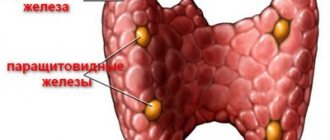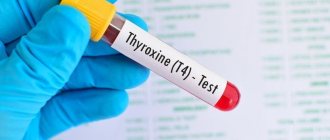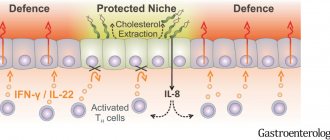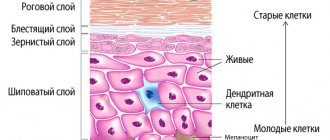Stroke
37198 11 August
IMPORTANT!
The information in this section cannot be used for self-diagnosis and self-treatment.
In case of pain or other exacerbation of the disease, diagnostic tests should be prescribed only by the attending physician. To make a diagnosis and properly prescribe treatment, you should contact your doctor. We remind you that independent interpretation of the results is unacceptable; the information below is for reference only.
Coagulogram (screening): indications for use, rules for preparing for the test, interpretation of the results and normal indicators.
Indications for the purpose of the study
Coagulogram (hemostasiogram) is a comprehensive hematological study aimed at assessing the state of the hemostasis system (blood clotting), or blood clotting indicators. The hemostasis system includes blood cells (platelets) and specific substances (clotting factors) dissolved in blood plasma and contained in platelets. When the integrity of the vessel wall is violated, the coagulation system is activated and a blood clot is formed, preventing blood loss.
Some time after the bleeding stops, fibrinolysis begins - the process of dissolving the blood clot after restoring the damaged vessel wall to resume blood flow.
Indications for a coagulogram are conditions accompanied by increased bleeding or, conversely, increased thrombus formation.
Increased bleeding leads to hemorrhagic syndrome. It is manifested by the formation of hematomas, pinpoint hemorrhages under the skin (petechiae), bleeding of the mucous membranes (nosebleeds, bleeding from the gums), the appearance of blood in the stool, urine, prolonged menstrual bleeding, as well as possible hemorrhages in the internal organs and body cavities. The most dangerous manifestation of hemorrhagic syndrome is hemorrhage in the brain - hemorrhagic stroke, which can lead to rapid impairment of brain function, including death. A hereditary disease associated with blood clotting disorders (decreased or absent clotting factors) is called hemophilia.
The opposite situation - thrombosis - is the formation of blood clots (thrombi) inside blood vessels, preventing the free flow of blood.
People with obesity, diabetes mellitus, heart rhythm disturbances (the most significant of which are atrial fibrillation and flutter), low physical activity, and patients after major operations (for example, joint replacement, heart valve replacement, emergency operations, etc.) are at risk of increased thrombosis. , with varicose veins, previous myocardial infarctions, strokes, and various autoimmune diseases.
Thrombosis in a certain area of the vascular bed is accompanied by an acute or gradual disruption of the blood supply to any organ with disruption of its functions and subsequent tissue necrosis.
In addition to the above conditions, a coagulogram is performed before operations to assess the risk of bleeding, when prescribing certain medications, and also necessarily in case of liver diseases, since most of the proteins of the blood coagulation system are synthesized in this organ.
Why do you need to know the INR?
INR analysis is a common research method during the diagnosis of cardiovascular diseases. In addition, bleeding and severe thrombus formation are direct indications for studying all parameters affecting coagulation.
Knowing the INR is very important for the cardiologist who prescribed anticoagulants to the patient, since this allows him to control the correctness of the dose calculation, in order not to harm the patient. This also includes taking warfarin, the dosage of which is determined for each patient individually.
In case of cirrhosis of the liver or other disease of the filtering organ, it is also important to know the INR level, because it is the liver that produces many factors that clot the blood.
A separate group of patients are pregnant women. First of all, this is due to the fact that the entire body system begins to work differently during pregnancy. The level of hormones and enzymes changes, and the volume of blood circulating through a woman’s veins increases. Hence the need to control the functioning of the hematopoietic system. Due to the high level of blood clot formation, the likelihood of complications is high. And if the blood is too thin and there is a lack of platelets, there is a high probability of dangerous bleeding during childbirth.
At the very beginning of labor, each woman in labor is given a catheter in a vein, into which, if necessary, an IV will be placed with a composition that increases the level of blood clotting to prevent large blood losses.
Preparation for the procedure
The essence of a coagulogram is to assess the activity of proteins of the blood coagulation system.
Therefore, proper preparation for this analysis is extremely important. Blood is taken on an empty stomach; the last meal should be at least 8-10 hours before the test. It is recommended to exclude excess amounts of fatty, sweet and protein foods. The drinking regime remains normal. The day before it is necessary to avoid stressful loads and intense sports. If the patient is taking any medications that affect coagulogram parameters, then, depending on the goals set for the study, it is necessary to either continue or stop taking them a few days before. This should be discussed with your doctor before taking the test.
If you need urgent results, you can contact the INVITRO offices, where express diagnostics are carried out. In this case, the analysis will be ready in about 2 hours.
Some of the proteins of the blood coagulation system are acute phase proteins. They are produced during stress, which includes not only physical and emotional stress, but also illness. Consequently, any persistent or short-term, but intense stress in the body can lead to changes in coagulogram parameters.
Dehydration (dehydration) is one of the reasons for blood thickening and an increase in the concentration of coagulation factors, which also leads to a distortion of the result.
The state of the blood coagulation system changes during pregnancy, both in the direction of increasing and decreasing the activity of a number of proteins.
The use of many medications affects the blood coagulation system. Thus, the first generations of oral contraceptives lead to an increased risk of thrombosis, and anticoagulants lead to bleeding. The list of drugs that affect the activity of the coagulation system is huge. When receiving any drug therapy, you should first consult with your doctor about the possible effect of a particular drug on the test result.
Taking certain medications by a pregnant woman, for example, warfarin, rifampicin, phenytoin, barbiturates, affects the production of clotting factors in the fetus. The child may subsequently be at high risk of bleeding.
INR norm
Units are used to express INR. The higher the INR, the less blood contains prothrombin and other factors that affect coagulation. The INR of a healthy person ranges from 0.85 units. up to 1.37 units. At the same time, the patient’s age affects the values of the norms:
- Newborns and children of the first year of life – from 0.9 units. up to 1.25 units
- Children from one to six years old can normally have 0.95-1.1 units.
- In patients aged 12-16 years, the normal INR ranges from one to 1.35 units.
- After 16 years, the value should be within 0.85 units. – 1.3 units.
For those who have already been prescribed anticoagulant therapy, the INR should be between 2.0 units. up to 3.0 units, because drugs that fight the formation of blood clots do not allow the blood to thicken, which also affects the prothrombin index.
If a patient is not taking blood thinning medications, but his INR is higher than normal, this may indicate:
- liver diseases;
- coagulopathies;
- prothrombin deficiency;
- lack of fibrogen;
- vitamin K deficiency;
- taking certain medications that affect blood composition;
A low INR always indicates that a person is at risk. Value below 0.5 units. reports the onset of venous thrombosis.
Coagulogram (screening)
No. OBS103Comprehensive studies
Hemostasiogram (coagulogram), screening A basic set of tests used for screening assessment of the state of the blood coagulation system.
Up to 1 business day
RUB 1,360 Add to cart
No. OBS109Comprehensive studies
Hemostasiogram (coagulogram) extended This set of tests is used for a detailed assessment of hemostasis disorders: if thrombophilia is suspected, the risk of developing thromboembolism and/or disseminated intravascular coagulation (DIC), or the patient’s severe general condition.
Up to 1 business day
RUB 3,790 Add to cart
You can take a coalogram at the nearest INVITRO medical office. A list of offices where biomaterial is accepted for laboratory research is presented in the “Addresses” section.
The blood coagulation system is primarily an enzymatic system that provides external, internal and general coagulation pathways. These mechanisms are successively replaced, but they can also occur independently of each other.
The screening coagulogram includes the following indicators:
- prothrombin (prothrombin time, prothrombin (according to Quick), INR - international normalized ratio);
- fibrinogen;
- APTT (activated partial thromboplastin time);
- thrombin time.
These indicators are basic and allow you to evaluate all coagulation pathways.
Rules for donating blood for a coagulogram
The price of an erroneous analysis is severe bleeding or, conversely, vascular thrombosis with the development of impaired blood supply to the organ.
To ensure the reliability of obtaining indicators, blood sampling for a coagulogram is carried out only if the necessary conditions are met:
- blood is taken on an empty stomach - this means that the patient cannot eat for 8 to 12 hours, a light dinner is allowed the night before, and it is strictly forbidden to drink alcoholic beverages (including beer);
- You should not drink tea, coffee, or juices an hour before taking blood;
- It is suggested to drink a glass of plain water 15-20 minutes before entering the treatment room;
- Physical activity and strenuous work are not recommended;
- You should be warned about the constant use of anticoagulants.
Coagulogram analysis is carried out from venous blood
General requirements for any analysis:
- you cannot donate blood against the background of a stressful situation or fatigue;
- If you feel dizzy from the sight of blood and injections, you should warn a medical professional (the test is taken with the patient lying on the couch).
The most appropriate time to take the test is in the morning, after a good sleep, before breakfast.
Normal indicators
| Index | Reference value | Unit |
| Prothrombin time | 9,0–15,0 | sec. |
| Prothrombin according to Quick | 78–142 | % |
| INR | depends on the presence of concomitant pathology in the patient for which he receives anticoagulant therapy | |
| APTT | 25,4–36,9 | sec. |
| Thrombin time | 10,3–16,6 | sec. |
| Fibrinogen | 2,00–4,00 | g/l |
| up to 5.6 (2nd and 3rd trimester of pregnancy) | g/l | |
To whom and why is a coagulogram prescribed?
The study of hemostatic and fibrinolytic properties of blood is indicated in the following situations:
- Preparation for planned or emergency surgery, including cesarean section;
- Heart and vascular diseases - myocardial infarction, stroke, coronary heart disease, atrial fibrillation, angina pectoris, pulmonary embolism, varicose veins, thrombophlebitis and deep vein thrombosis;
- Pathologies of the hematopoietic system - hemophilia, thrombocytopenia, anemia, von Willebrand-Diane disease, frequent nosebleeds, unexplained bruises, abnormally heavy menstruation and intermenstrual bleeding;
- Chronic liver diseases - fatty or alcoholic hepatosis, cirrhosis, hepatitis;
- Autoimmune diseases – scleroderma, rheumatoid arthritis, systemic lupus erythematosus;
- Pregnancy (for preventive purposes), severe toxicosis, gestosis, threat of miscarriage, miscarriage;
- Suspicion of existing DIC syndrome;
- Long-term use of hormonal contraceptives that thin the blood (Warfarin, Aspirin, Heparin, Trental and others);
- Treatment with hirudotherapy sessions.
Decoding the result
I. Quick's prothrombin, prothrombin time, and international normalized ratio (INR) reflect the activity of the extrinsic coagulation pathway.
- Prothrombin time
is the time of blood clotting after the addition of substances (thromboplastin with calcium) to the plasma that trigger the extrinsic blood coagulation pathway. Time is measured in seconds (sec.). The longer the prothrombin time, the lower the activity of coagulation factors. - Prothrombin according to Quick
is considered a more objective indicator of the external pathway, since during the analysis the clotting time is studied depending on the different concentration of coagulation factors in the blood obtained by diluting the test material in the laboratory. The indicator is measured as a percentage (%). The longer blood clotting occurs, the lower the Quick prothrombin percentage. - The international normalized ratio (INR)
is a prothrombin test standardized in accordance with international recommendations. It is calculated using a certain formula. The higher the INR, the longer it takes for a blood clot to form.
Prothrombin time, prothrombin according to Quick and INR with normal fibrinogen content and activity also reflect the activity of the prothrombin complex (II, V, VII, X blood coagulation factors).
When prescribing therapy with anticoagulants from the group of vitamin K antagonists (warfarin), there is an increase in INR and prothrombin time and a decrease in prothrombin according to Quick. Other causes of these changes may be vitamin K deficiency (for example, with hemorrhagic disease of the newborn), hereditary deficiency of factors II, V, VII, X, liver and intestinal diseases. The opposite picture, i.e., a decrease in INR, a decrease in prothrombin time and an increase in prothrombin according to Quick, occurs in conditions accompanied by increased blood clotting: thrombosis, blood thickening during dehydration, when taking oral contraceptives, barbiturates.
II. Activated partial thromboplastin time (aPTT)
with normal content and activity of fibrinogen, it characterizes the internal pathway of blood coagulation, which includes the activity of factors II, V, VIII, IX, X, XI, XII. APTT is determined by adding reagents that trigger this clotting pathway to a blood sample and measuring the time it takes for the blood to form a clot. Measured in seconds (sec.). The slower the blood clotting, the longer the APTT.
This indicator is used to monitor therapy with heparin (direct anticoagulant), and an increase in the aPTT value is noted. Other causes of increased time include hereditary and acquired deficiencies of intrinsic pathway coagulation factors, for example, in hemophilia, hemorrhagic disease of the newborn, liver and intestinal diseases, some autoimmune diseases, etc. The reasons for increased aPTT are the same as for Quick's prothrombin.
III. Thrombin time and fibrinogen reflect the overall, or final, pathway of blood clotting.
- Fibrinogen
is blood clotting factor I, a protein synthesized in the liver and converted into fibrin, the basis of the clot during blood clotting. It is also an acute phase protein. It is measured in grams per liter (g/l). With increased thrombus formation and various inflammatory diseases, the synthesis of this protein increases. In case of liver diseases, hereditary fibrinogen deficiency, etc., its concentration decreases. - Thrombin time
is the blood clotting time necessary for the formation of a fibrin clot when thrombin is added to the plasma - an enzyme (factor IIa), which appears when blood coagulation factors interact when a vessel is damaged. Thrombin time depends on the level and activity of fibrinogen. Measured in seconds (sec.).
Changes in thrombin time generally correlate with fibrinogen levels. However, with such a hereditary disease as dysfibrinogenemia, i.e., a violation of the functional activity of fibrinogen, an increase in thrombin time and a coagulation disorder occurs, despite the normal amount of fibrinogen in the blood.
The value of a coagulogram during pregnancy
Simultaneously with the coagulogram indicators, the group and Rh factor are checked in pregnant women
The physiological restructuring of a pregnant woman’s blood circulation requires additional blood volume, a new placental circulation, and the production of additional cells and substances responsible for hemostasis of the mother and fetus.
To monitor normal development during pregnancy, a coagulogram test is prescribed every trimester. As a rule, coagulability increases slightly. It is the pregnant woman’s body that protects itself from blood loss. Decoding indicators allows you to prevent:
- thrombotic complications (thrombosis of the veins of the extremities);
- possible miscarriage;
- promptly diagnose placental abruption;
- prepare for childbirth.
Even a large volume of coagulogram indicators is insufficient for diagnosing congenital diseases. Coagulation factor studies are being added.
Evaluation of the indicator requires comparison of individual groups of tests, taking into account biochemical blood tests, and knowledge of characteristic changes in chronic diseases.
Natural hemostasis system
Blood clot formation
In a healthy body, a normally functioning hemostatic system is a natural defense against excessive blood loss when the integrity of the vascular wall is compromised. Many people know about the danger of blood clots to human health and life, but nature does not create anything in vain: thrombus formation is the very protection against blood loss. Let's try to find out how the natural hemostasis system works.
Blood is constantly in a liquid state. Moreover, this liquid has a certain composition and physical parameters. The body's systems tirelessly maintain this state throughout life. However, various situations occur: for example, as a result of damage to the vessel wall, bleeding occurs. The first substance that is released in the blood is thromboplastin. It starts the coagulation system: it activates proteins that are normally present in the blood. These proteins form a clot at the site where the integrity of the vessel is damaged. A chain is created that leads to thrombus formation: thrombin is synthesized from prothrombin, which activates fibrinogen, from which, in turn, fibrin is formed. It is in fibrin, like insects in a spider's web, that platelets get stuck, forming a blood clot. The fibrin clot “patches” the wound in the vessel, and the bleeding stops.
In a healthy body, both systems - coagulation and anticoagulation - are in balance. But there is also a third system - resorption (fibrinolysis). It is this that ensures the dissolution of the blood clot after the integrity of the vessel is restored. Coagulogram indicators allow us to draw a conclusion about the state of all systems.
How much does a coagulogram cost, when can I expect results?
You can take such an analysis at any private diagnostic center, and the cost will depend on the region and the pricing policy of a particular institution. In Moscow, a screening coagulogram will cost an average of 1000 rubles, and an extended one - 3500 rubles. Meanwhile, the study can be done free of charge, if there is evidence for it: just contact a doctor at your place of residence, present your compulsory health insurance policy and get a referral. A blood coagulogram is performed in any state laboratory at a clinic or hospital.
The period for receiving analysis results depends on the workload of the institution, but usually is no more than two days. In emergency situations, a hemostasiogram is performed immediately and the report is sent to the attending physician.
Expectant mothers have the right to a free blood coagulogram as part of pregnancy management and preparation for childbirth. If there are no signs of pathology, the analysis is performed three times, that is, in each trimester.
Video: Dr. Evdokimenko - simple tips on blood thinning, prevention of atherosclerosis and thrombophlebitis.
Where can I get tested and how much does it cost?
Anyone can take a blood test such as a hemostasiogram at one of the nearest medical centers, if it has the necessary equipment and reagents at its disposal. The cost of a coagulogram depends on the range of services and equipment of the center. Basically, the price of the basic package varies from 700 to 1,300 rubles (in Moscow). An extended coaguloramma costs about 3,500 rubles.
However, for pregnant women, a coagulogram is included in a number of mandatory studies and is carried out free of charge. Under the compulsory medical insurance system, you can also get a test completely free of charge, having first received a referral from your attending physician.










